Date: Saturday, June 7
Location: Boston Convention & Exhibition Center
About the Speakers:

As the AEC Practice Leader for Architects and Owners at Egnyte, Aaron Vorwerk, AIA, NCARB, EIT, LEED AP BD+C, draws from broad experience across the industry to lead go-to-market initiatives, drive thought leadership, and influence product development. Aaron has spent much of his career advising design and construction professionals around the world on project lifecycle strategy, digital transformation, and best practices. He holds graduate degrees in architecture and engineering (BSCE, MSCE, M.Arch) and maintains his licenses in architecture and sustainability. Aaron is a frequent author, speaker, and panelist on current AEC industry topics.


Niknaz Aftahi, the founder of aec+tech, has a deep-rooted passion for the AEC industry and the transformative power of technology. With a strong background in architecture and construction technology, she has positioned herself at the crossroads of these industries, recognizing the unique challenges and opportunities within each. Her work has been fueled by a desire to make advanced solutions more accessible and practical for industry professionals.
Through collaborations with architects, engineers, developers, and contractors, Niknaz has gained valuable insights into the sector’s pain points. She has also built connections with leading tech innovators, ensuring that aec+tech users have access to the key tools and resources needed for their tech discovery and adoption journey. For her, aec+tech is more than promoting construction technology—it is about fostering a community where AEC professionals share their experiences and support one another in innovating and improving the built environment.
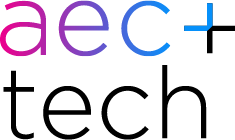
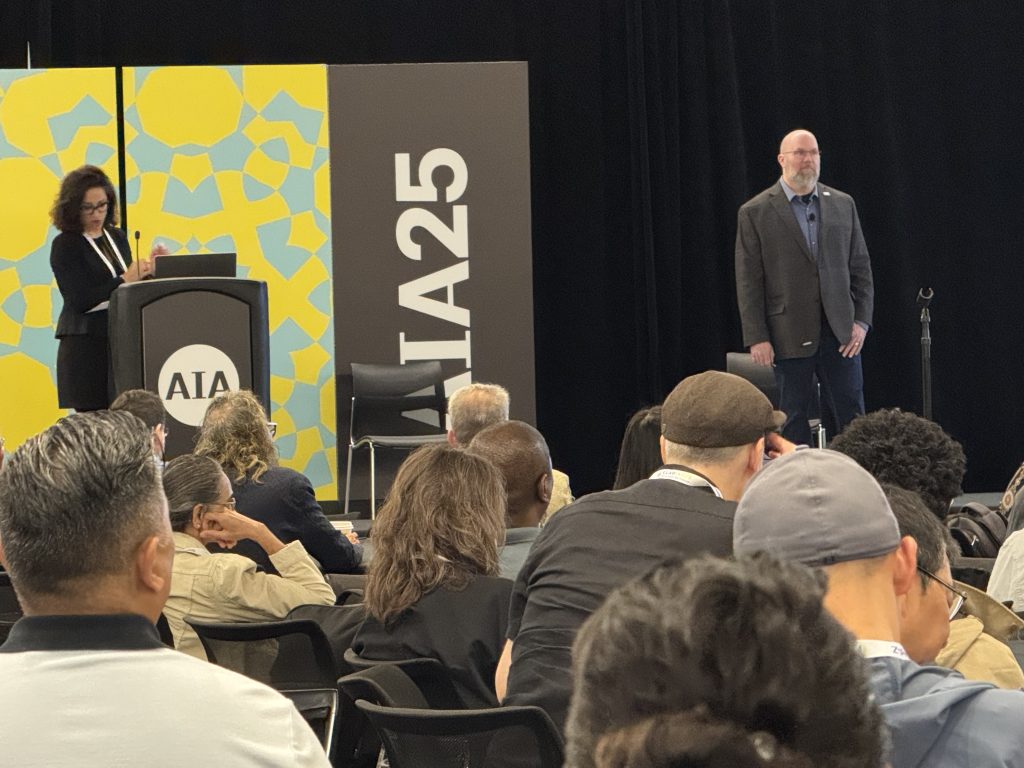
Navigating AI Adoption in AEC Firms: A Strategic Framework for Success
The architecture, engineering, and construction (AEC) industry stands at a pivotal moment in its digital transformation journey. As artificial intelligence tools rapidly evolve and proliferate, firms face both unprecedented opportunities and significant challenges in implementing these technologies effectively and responsibly.
Understanding AI: The “Super-Smart Toddler” Analogy
This alien nature of AI processing means that traditional approaches to quality control, verification, and workflow integration require fundamental reconsideration. The speed and scale at which AI operates can amplify both excellent results and catastrophic errors with equal efficiency.
To successfully implement AI in AEC practices, we must first understand what we’re working with. We like to humanize AI, perhaps conceptualizing an AI tool or process as being driven by “a million super-smart toddlers” – incredibly fast, capable of processing vast amounts of information, yet fundamentally immature, and sometimes providing incorrect answers to even the most basic of questions. We need to remember that AI operates on entirely different principles than human cognition, and data quality is paramount..
The Growing Data Challenge
AEC firms are experiencing an unprecedented explosion in data generation and storage. Recent industry reports indicate an 800% increase in cloud storage over a five-year period among AEC companies, based on a study of more than 4,000 firms by Egnyte. While much of this growth stems from beneficial developments – smarter tools generating more data, increased cloud-based collaboration, and enhanced global connectivity – it introduces new risks as well.
This data proliferation presents several critical challenges:
- Data Quality Degradation: Unorganized local file servers become exponentially more problematic when scaled to unlimited cloud storage capacity
- Security Vulnerabilities: Poor data organization creates more attack vectors and compliance risks
- AI Input Quality: Disorganized data feeds directly into AI systems, potentially producing unreliable or irrelevant outputs
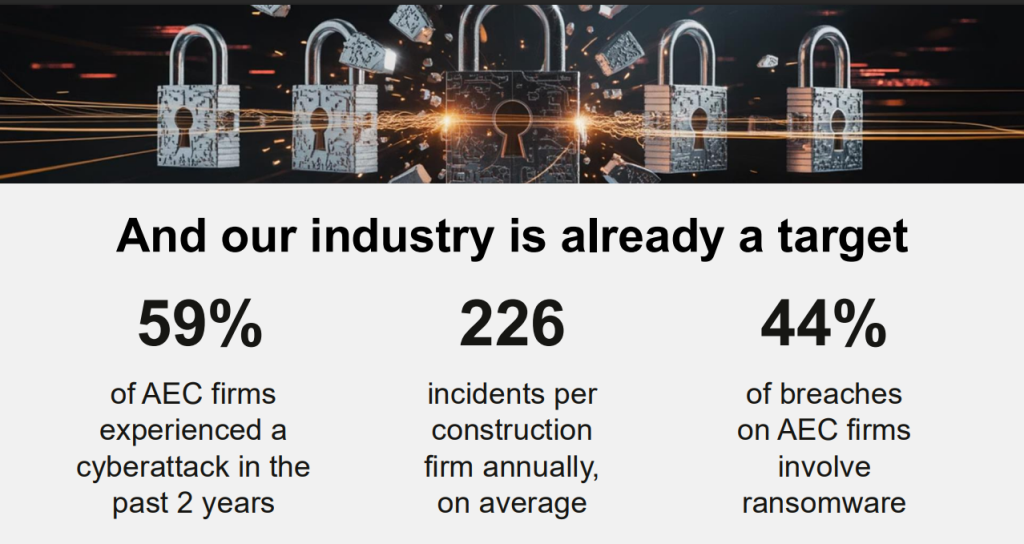
The Security Reality
The security landscape for AEC firms has become increasingly precarious. Current industry statistics reveal sobering realities:
- 59% of AEC firms have experienced some form of cyber attack within the past two years
- Construction firms average 226 security incidents annually
- 44% of data breaches involve ransomware attacks
The combination of increasing cloud data storage, AI tool adoption without proper governance, and inadequate data security measures creates a perfect storm of vulnerability.
The “3Ps” Framework: Practical, Purposeful, and Private
Successful AI implementation in AEC firms should be evaluated against three fundamental criteria:
Practical
- Easy Deployment: Does implementing the AI solution require significant modifications to the current technology infrastructure? Is it a “self-serve” installation, or does it require third-party expertise?
- Workflow Integration: Does the AI solution plug seamlessly into your team’s current processes, or will it force a significant and disruptive change? This isn’t always a bad thing, but it’s not to be taken lightly.
- Immediate Utility: Is it something that can be turned on and used effectively right away?
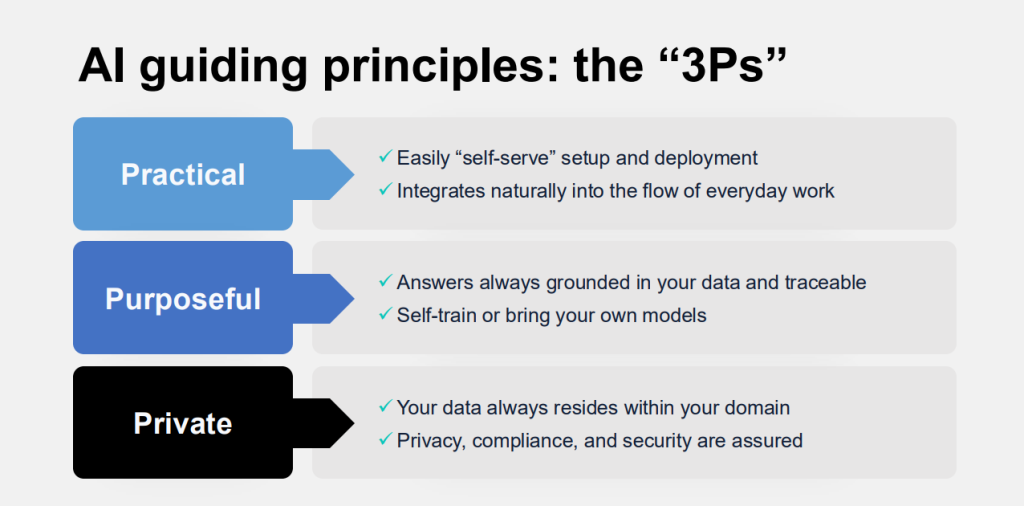
Purposeful
- Grounded Results: Are the AI outputs based on your firm’s actual data and traceable to internal sources?
- Business Value: Does the solution provide a measurable business impact, i.e., beyond “novelty”?
- Strategic Alignment: Does it guide your practice toward meaningful improvements in efficiency, quality, or capability?
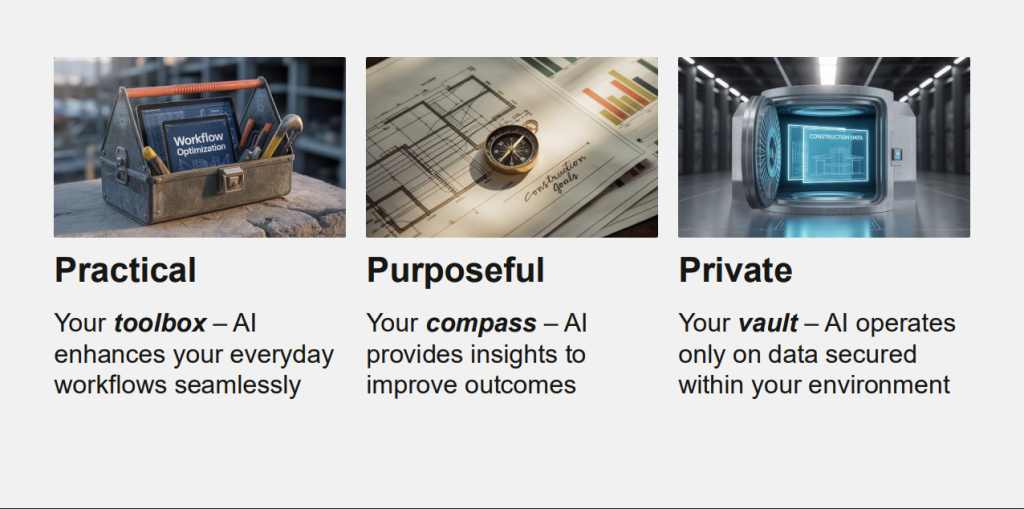
Private
- Data Sovereignty: Does your data remain within your domain and under your control?
- Security Assurance: Are you confident in the tool’s security measures and data handling practices?
- Compliance Alignment: Does the solution meet relevant regulatory and professional standards?
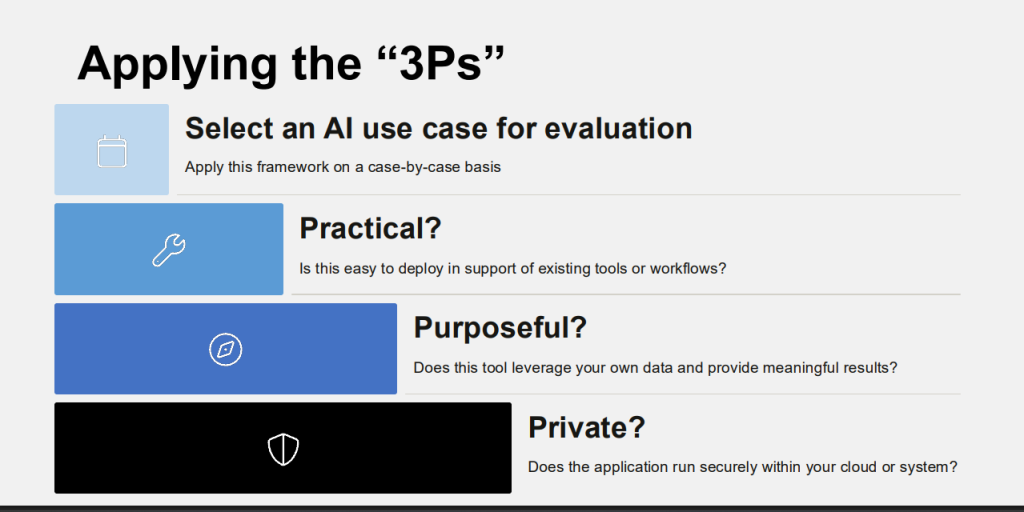
The Toolbox, Compass, and Vault Analogy
Effective AI tools in AEC should function as:
– Your Toolbox: Practical instruments that integrate naturally into standard workflows
– Your Compass: Guidance systems that provide direction toward previously inaccessible insights or capabilities
– Your Vault: Protective systems that secure rather than expose your critical business data
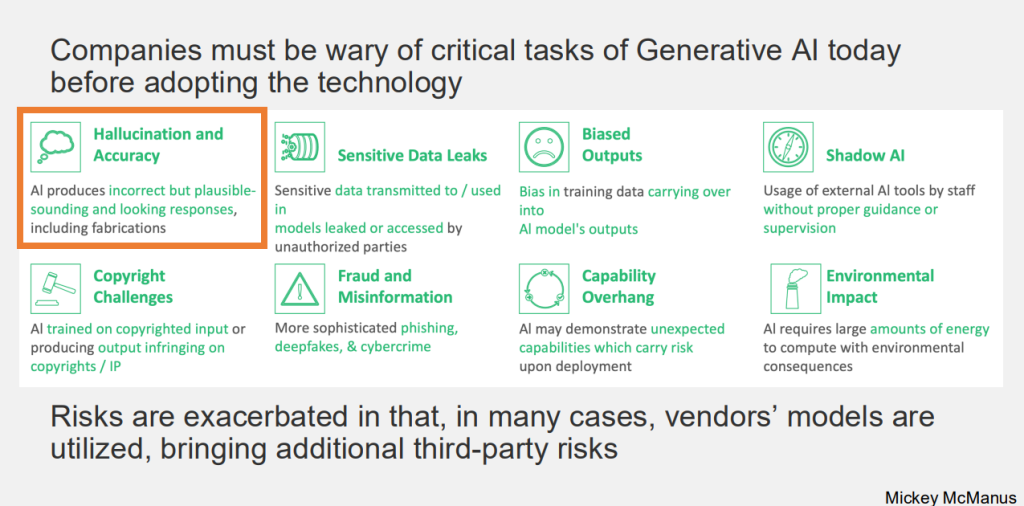
Addressing Common AI Pitfalls
Hallucinations and Quality Control: AI systems can produce compelling but entirely fictional results, from beautiful but unbuildable renderings to detailed technical responses that are completely inaccurate. Understanding where and why hallucinations occur is crucial for maintaining professional standards and avoiding costly errors.
The Garbage In, Garbage Out Principle: Even the most sophisticated AI systems will amplify poor-quality input data. The importance of data cleaning, labeling, and governance cannot be overstated before deploying AI tools on critical projects.
Third-Party Dependencies: Many AEC firms purchase AI-enabled software from third parties, creating additional layers of risk and dependency. Understanding the AI models and data handling practices of these vendors is essential for maintaining security and compliance.
Implementation Strategy: Following a 70-20-10 approach (or similar) helps firms avoid the “shiny object syndrome:
– 70% Core Enhancement: Focus on improving existing daily workflows and eliminating routine inefficiencies;
– 20% Adjacent Innovation: Explore tools similar to current practices but with enhanced capabilities; and
– 10% Transformational: Investigate disruptive technologies that could fundamentally change practice models.
This distribution helps to ensure steady, manageable, and meaningful progress while maintaining operational stability.
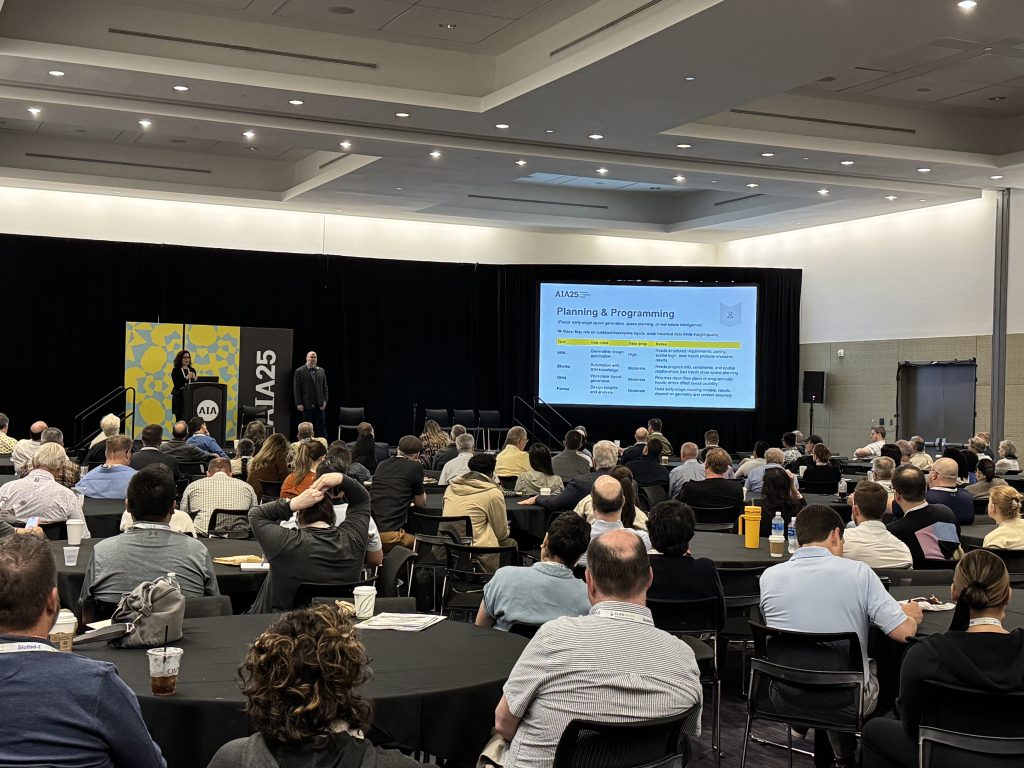
Building Internal Capabilities
The changing landscape requires firms to reconsider their staffing and skill development strategies. Traditional design-only roles are evolving to require greater technical literacy, while new hybrid positions combining design expertise with computational skills are becoming essential.
Consider developing or recruiting:
– Data specialists who understand AEC workflows
– Computational designers with architectural or engineering backgrounds
– AI literacy across all team members, not just technical specialists
Risk Management and Professional Responsibility
Legal and Contractual Considerations: AI usage raises questions about professional liability, intellectual property, and contractual obligations. Firms should:
– Review existing contracts for AI-related clauses
– Understand liability implications of AI-generated work
– Establish clear protocols for AI tool usage and output verification
Regulatory Compliance: As AI tools become more prevalent, regulatory frameworks are evolving rapidly. What begins as cutting-edge differentiation often becomes standard practice and eventually mandatory compliance. Staying ahead of these regulatory curves is crucial for risk management.
Quality Assurance: Maintaining professional standards requires robust verification processes for AI-generated content. Just as structural analysis software didn’t eliminate the need for engineering judgment, AI tools don’t replace the need for professional expertise in interpreting and validating results.
The Education Challenge
AI adoption in AEC presents a double-edged sword in professional education. While these tools can accelerate certain aspects of design and analysis, they risk short-circuiting critical thinking processes that are fundamental to professional development.
Educational strategies should focus on:
– Using AI as a teaching tool rather than a replacement for learning
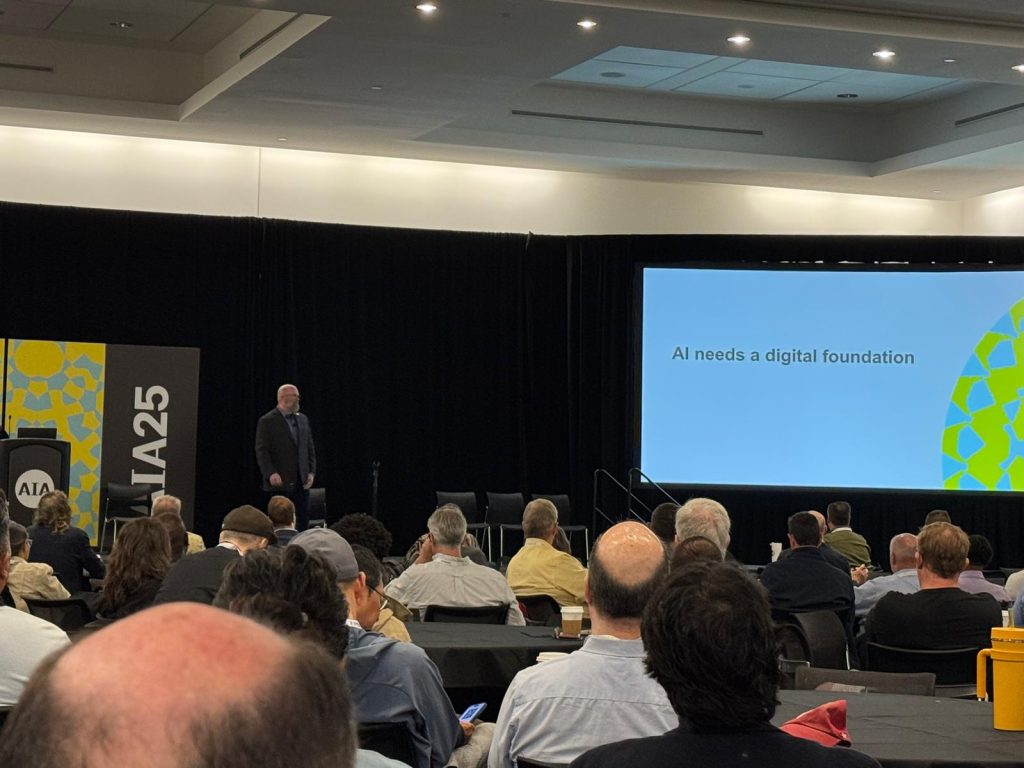
– Emphasizing the importance of professional judgment in interpreting AI outputs
– Developing critical evaluation skills for AI-generated content
Looking Forward: Timing and Investment
The rapid pace of AI development raises questions about optimal timing for investment and adoption. However, waiting for technology to stabilize is often counterproductive. The key is finding the right balance between staying current and avoiding unnecessary complexity.
Consider these principles:
– Evaluate return on investment based on current capabilities, not future promises
– Start with small, low-risk implementations that provide immediate value
– Engage with AI tool developers to influence product development and stay informed about emerging capabilities
– Participate in industry conversations about AI adoption and best practices
Conclusion
AI adoption in AEC firms requires a thoughtful, strategic approach that balances innovation with responsibility. By maintaining focus on practical implementation, purposeful application, and private data security, firms can harness the transformative potential of AI while mitigating associated risks.
The industry is at an inflection point where AI literacy and strategic implementation will increasingly distinguish successful firms from their competitors. However, this technological advantage must be built on a foundation of proper data governance, security awareness, and professional responsibility.
As we navigate this transformation, remember that AI is a powerful tool in our professional toolkit – it is neither a magic solution nor a threat to professional expertise, but a capability that, — when properly implemented, — can enhance our ability to deliver exceptional value to clients while maintaining the highest standards of professional practice.
The firms that succeed in this new landscape will be those that approach AI adoption with clear strategy, proper preparation, and unwavering commitment to professional excellence.


